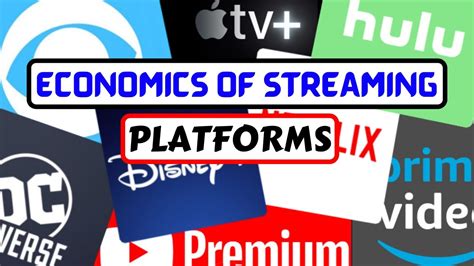Video streaming platforms have revolutionized the digital media landscape, but the economics behind their operations remain complex and intriguing. YouTube, the giant in this space, stands out for its seemingly free services despite massive costs involved. Delving into insights from industry experts sheds light on how YouTube manages to handle the high demands of storing, encoding, and streaming videos without passing costs to users.
One crucial aspect highlighted by commenters is YouTube’s reliance on advertising revenue, with staggering figures like $31.5 billion in 2023. This revenue stream, coupled with Google’s extensive infrastructure and peering agreements, allows YouTube to mitigate some of the significant expenses associated with video streaming. Understanding the scale at which YouTube operates underscores the importance of maximizing efficiency in resource allocation.
The comments also touch on the competitive dynamics in the video streaming market, emphasizing the role of scale in driving profitability. As YouTube grew, it leveraged its massive user base to attract advertisers and optimize cost-effective content delivery mechanisms. The network effect plays a pivotal role, making it challenging for new entrants to replicate YouTube’s success without similar scale and resources.
Bandwidth costs emerge as a central point of discussion, with insights into how larger players like YouTube secure favorable deals and build their own content delivery networks to streamline streaming operations. The scalability of infrastructure, from data centers to caching nodes, enables cost efficiencies that smaller platforms struggle to achieve. By strategically managing resources and investing in specialized hardware like encoding ASICs, YouTube optimizes its operations at a monumental scale.
Addressing the dynamic nature of video content, YouTube’s approach to storage, encoding, and streaming undergoes continuous refinement. The platform’s ability to adapt to changing viewer preferences, ad monetization models, and technological advancements underscores its evolutionary trajectory. Moreover, YouTube’s investment in diverse revenue streams beyond traditional ads reflects a proactive stance toward sustaining profitability amidst evolving market trends.
The complexities surrounding video streaming economics extend beyond technical considerations to encompass strategic decisions, industry competition, and user behavior patterns. As YouTube continues to innovate and navigate the intricate balance between costs and revenues, its position in the digital landscape remains a testament to the power of scale, innovation, and adaptability. Understanding the intricate interplay of factors shaping video streaming platforms offers valuable insights into the digital media ecosystem.
With a deep dive into the economics of YouTube and video streaming platforms, it becomes clear that the ‘free’ nature of services like YouTube belies the intricate web of investments, optimizations, and revenue strategies at play. Behind every click and view, a complex infrastructure supports seamless content delivery, reflecting the evolving dynamics of digital media consumption. As the industry continues to evolve, the economics of video streaming platforms will remain a fascinating domain of innovation and competition.


Leave a Reply